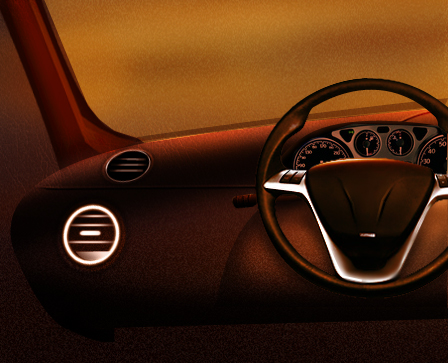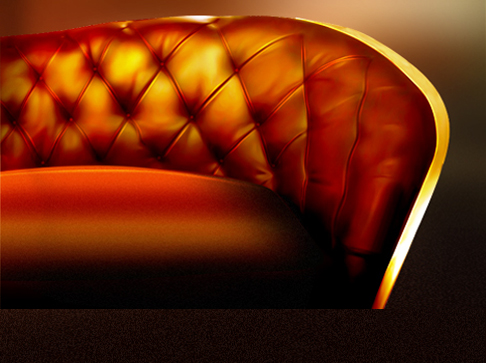By the type of skins
The most valuable are the leather of cattle hides — it is durable, flexible, with a beautiful extent, are produced with chromium and vegetable tanning. Subdivided into the several types.
Kidskin - hide of the unborn calves, thickness 1,0 - 1,4 mm, are used for the manufacture of shoe uppers.
Calfskin - leather of the dairy calves, the most valuable type of cattle hides, soft, flat, flexible, has a nice grain. Skins thickness from 0,5 to 1,4 mm chrome-tanned leather goes for clothing, more fat - on top of shoes. Skins of dairy calves fed not only on milk, but also on the water - somewhat cruder.
Year-old-calf skin - the leather of calves fed already vegetarian diet. It is produced with chrome tanning for leather goods and shoe uppers, the thickness of the leather 0,7 - 1,6 mm. The skins of thickness 2.5 mm cut on doubling machines getting splits. The leather of year-old-calf skin is much coarser than dairy calf skin.
Half leather — the leather produced with combined (juft) or chrome tanning of skins of calves over the age of 1 year. The thickness of the leather from 1 to 3 mm, it is more rigid and dense than year-old-calf skin. Leather which is chrome tanned goes to the top of footwear, vegetable-tanned - due to the fine grainn and beautiful beige - for souvenir items. From the thicker skins make the technical leather.
Young bull - produced from the skins of calves. It is up to 4 mm thick and vegetable or chrome tanning, is produced for sole's leather and splits.
Rawhide - cow leather, elastic, with even a nice facial layer thickness 1,2 - 4,0 mm. Thin leather is for shoes which is produced with chrome tanning of leather and with a thickness exceeding 2,5 mm are also used on shoe splits and the skins of medium thickness used for the manufacture of rawhide and saddlery leather where thicker go for leather, and technical plantar leather.
Bull - a young bull leather thickness up to 5 mm, is applied as widely as Rawhide.
Bull and buffalo - the leather of oxen, very thick and heavy among the hides of cattle has rough and loose structure, so used to sole's, plantar, technical, and rawhide leather.
From curry goat skins make very strong, thin and soft leather with fine wavy pattern, which is used in the manufacture of clothing, footwear, leather goods and various upholstery for furniture.
Goatskin favorably with those of sheep its density, water resistance and elasticity. Sheep leather often go to the raw material is, but because they produce and the leather.
Chevrette - beautiful soft lambskin leather with chrome tanning thickness 0,6 - 1,2 mm, very viscous, and therefore to eliminate this drawback, at its front surface coat. Comparing with the kid Shevret it is less elastic.
Shagreen - soft rough goatskins or sheepskin.
Sufian - soft, thin leather vegetable tanned, dyed, usually in bright colors, sometimes maketh skins of calves, foals and sheep.
Chevry - manufactured from chrome tanning goat skins (young), has a thickness of 1 mm.
Goat - produced with chrome tanning of skins of adult individuals.
Pork leather in its structure is very different from cattle hides. The layer of the epidermis is thick, but actually the leather is not divided into papillary and mesh layers. Bristles through the layer actually penetrates the leather to the subcutaneous tissue, there also are fat and sweat glands. Very well-developed, thick subcutaneous tissue is often half of the leather. The layer of the leather itself also contains a lot of fat cells. Hairs thick and rough, but the location of hair less than that of cattle. Collagen fibers are very thin and densely interwoven, but because of the large amount of fat and sweat glands, a large number of fat cells, and also from the fact that the hair actually penetrate through the entire leather, pig leather is not fragile. The difference in the thickness of the leather is not so noticeable, like leather from cattle hides, but the spinal part of the leather is also thicker than in the abdominal.
Pig leather is used as an underlayment for the manufacture of clothing, leather goods and saddlery products.
Horse leather
Stallion - skins dairy foals. In general, the stallion considered a valuable for the fur raw materials. If for some reason does not go in fur production, then with no less successfully used in tanning.
Colt - hide foals, who have tasted vegetarian food.



